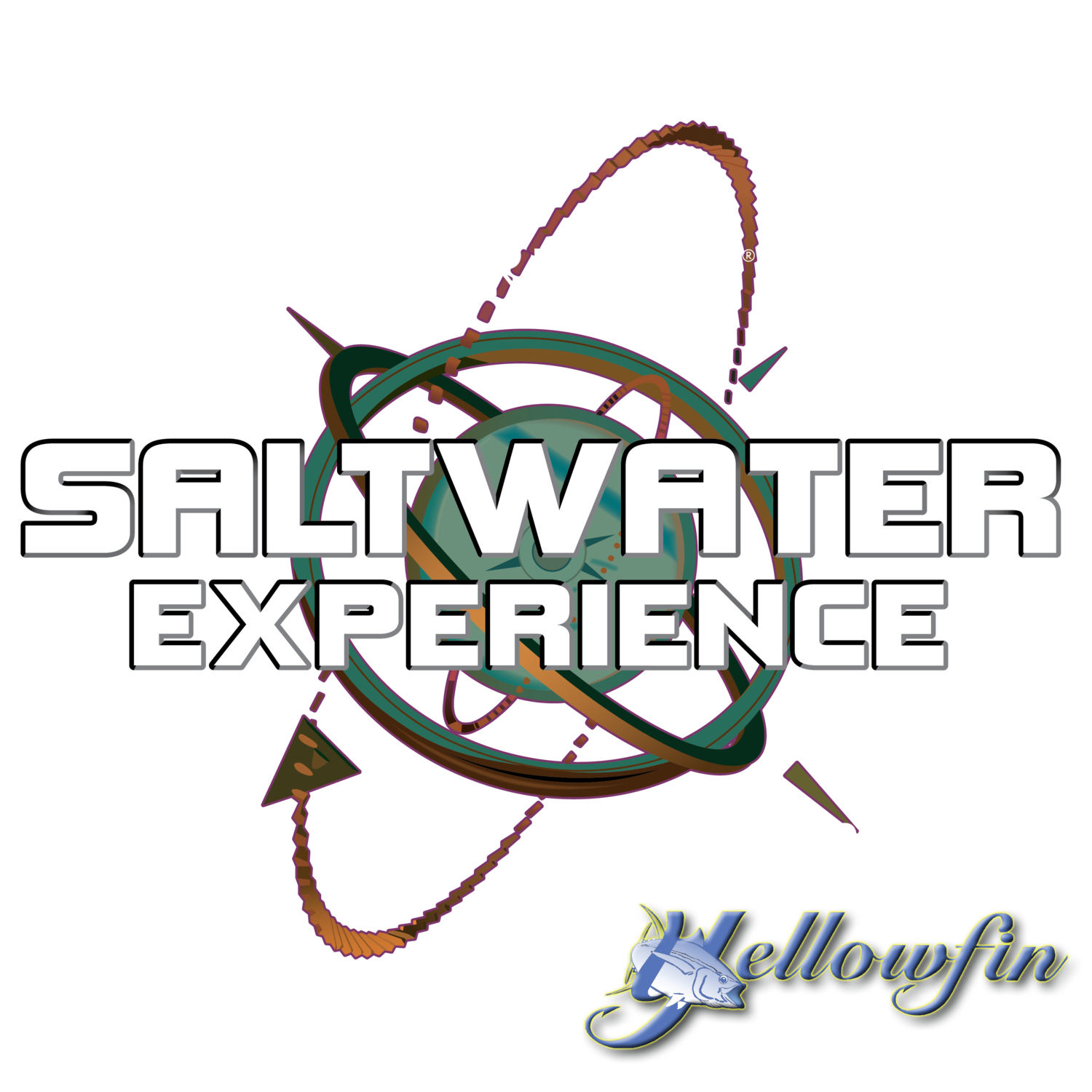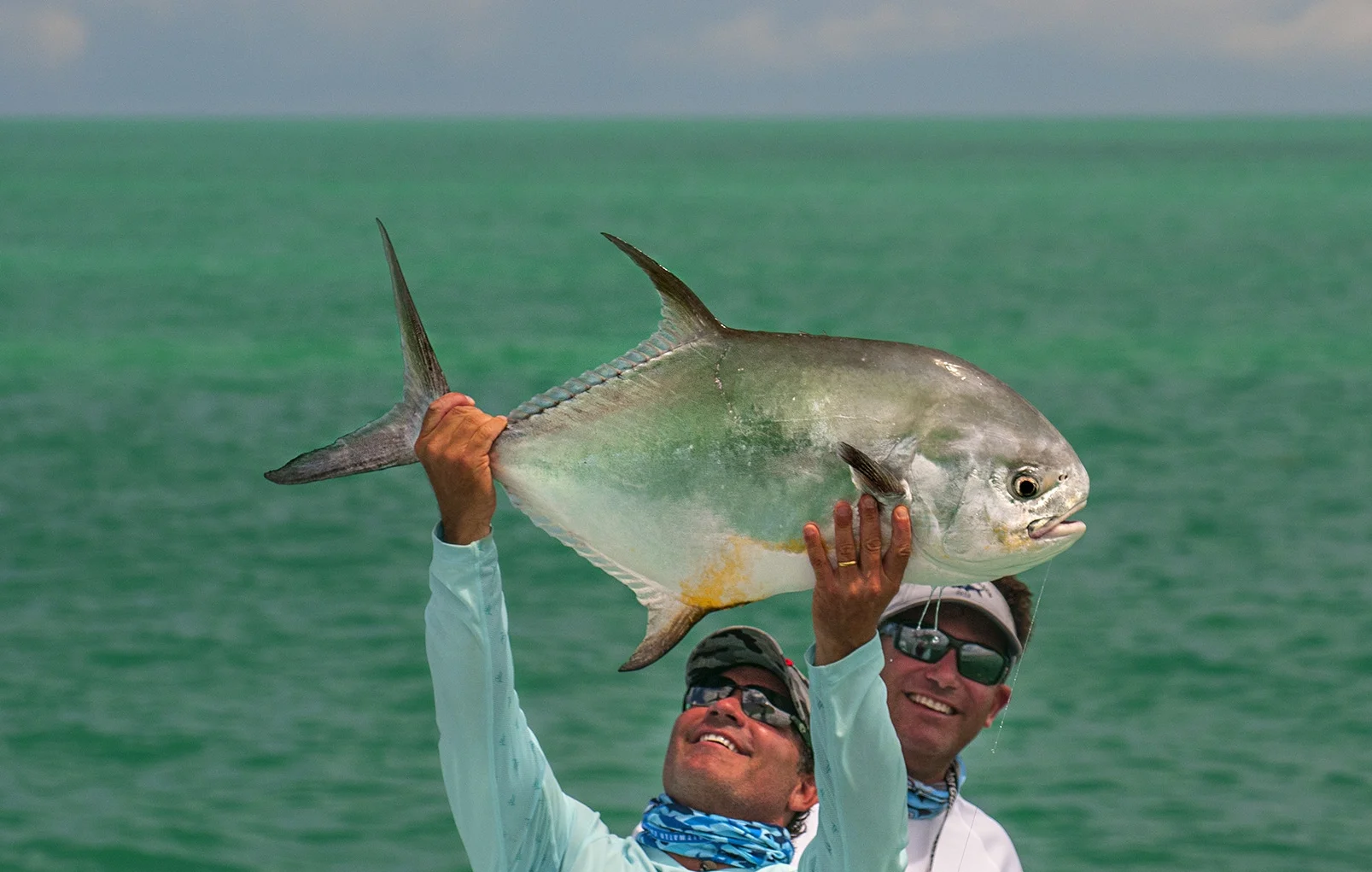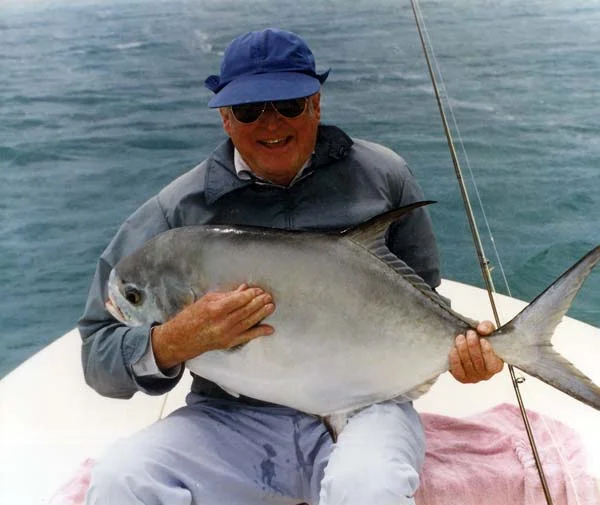The Permit is my favorite fish. Read on to find out the very best seasons, locations and guides to help you catch a Permit
How To Catch A Permit-Permit Fishing 101
Seasons and Guides - Part 1/3
by Tom Rowland
The Lower Florida Keys are one of the very best places in the world to catch Permit on the flats. In order for Permit to be plentiful, they need the right temperature, food source, vast inshore and offshore habitat and structure such as wrecks, coral heads and bridges.
Best Seasons and Tides
In the Florida Keys, the permit fishing is truly year round. Of course, there are better times than others for permit, but anglers can feel confident that with enough looking, permit can and will be found. My favorite times of the year are Feb, March, June-November. The months of Feb and March coincide with the water temperatures climbing back into the comfort zone of the permit while also being just before the spawning season for permit. This time seems to be when there are a lot of permit on the flats and also when conditions are conducive to catching the fish on the fly. I look for post cold front days when the sky is completely clear and the temperature is increasing for the best opportunities. The windy conditions that usually accompany this meteorological scenario allow anglers to get close to the permit and require shorter casts.
I like the summer and fall the best for finding the largest number of permit both on structure and flats. The calm conditions of the summer and fall will require longer casts with both spin and fly, however, opportunity at the fish abounds.
During both times of year I prefer a big high tide in the middle of the day of 1.5 or greater. This allows me to fish virtually wherever I want and lets the permit frequent areas formerly inaccessible. It is important to remember that we have a 4-6 hour tidal difference between the ocean and many areas of the backcountry so many anglers make a big mistake by choosing the time to fish simply based on the tide chart. Each area has its best tide and the discovery of this only comes through many days spent researching these areas.
It is also important to understand that as a guide specializing in permit fishing, I am expected to find permit everyday so I have had to learn to fish effectively on all tides and conditions. I routinely tell anglers that tide is not as important as the time of year or skill level of the angler. In other words, a good angler is better off on the worst tides in August than after a debilitating cold front on the prime tides in December.
Booking Guides
Anglers who have never fished the Lower Keys would do well to invest in a quality guide. Finding that individual is a tough prospect sometimes. Try to find someone who specializes in permit and has a good track record of catching them. You definitely want a guide who is super excited about permit fishing rather than feeling like it is a pain in the rear. If you are planning on flyfishing for permit, it is even more crucial that you find the guide who is a permit flyfishing specialist. This means that they will have the right boat (technical poling skiff) and that they are really psyched about permit fishing all day. Some guides say that they fly fish for permit just to get the trip, but when the fishing gets tough, they are ready to fish for something else or use different tackle. The guides who are successful with fly are ready and willing to go weeks without catching anything in any condition. Find the guy who has this attitude and is on the same page as you are for strictly flyfishing. On the contrary, if you are only interested in catching permit on any tackle, this may not be the guide for you. There are tons of days where fly anglers are going to have a rough time but spin anglers can have banner days. Know what you want to do before you go and select the right guide. Another approach would be to do a couple of days with a strict fly guy and a couple of days with a guy that fishes many different ways. You will learn more with the second approach but it is not what everyone wants to do.
Boat control and poling
The most important thing about permit fishing from a boat is to be quiet. Slamming hatches, noisy feet and hull slap will prevent you from catching permit. Many anglers get sucked into the shallow water because they are not confident finding the fish if their tails do not come out of the water. Tailing fish are fun and exciting but more difficult to catch. I routinely fish in 3-6 feet of water and catch permit on every type of tackle. Approach slowly and quietly in areas that you believe permit will be feeding. Be ready to stop the boat quietly when you see the fish and position the boat for the best possible shot.
Flats boats are not the only type of boat that anglers can have success. The new breed of bay boats will also allow anglers quality shots at permit. I use my Yellowfin 24 Bay with a trolling motor to catch large numbers of permit throughout the year, in fact, far more than in my skiff. It is important to have a mechanism to stop the boat. I have 2 PowerPoles with remote control mounted on all of my boats which allows for silent stopping of the boat in extremely high winds. I suggest using the trolling motor as little as possible and on a consistent setting. Constant altering of the speed is alarming to the fish but anglers can get very close to fish by keeping the motor on a low setting and taking their time in getting to the fish. Approach downwind and be ready to stop the boat when you see the fish. Stopping the boat creates distance between you and the fish and prevents the boat from inadvertently running over the quarry.
When poling, it is important to have an athletic guide who will pole into any amount of wind for the entire day. This is NOT the type of guiding for someone who is lazy, unmotivated or out of shape. Permit guiding for flyfishing is a physically demanding, mentally challenging activity. It is definitely not for everyone and only a few of the guides that you see on the dock are even capable of poling as hard or as long as may be required for consistent flyfishing success.
Get what you want
Local fly shops are a good source of information on the top guides in an area. You can also look at the results of the past Permit tournaments in the Florida Keys and get a pretty good idea of who catches fish consistently, Don't use this as your only guide though. Many of the very finest permit flyfishing guides don't fish in the tournaments. Get some good information and call the guide. Talk to him about his approach. If your only goal is to catch a permit on fly, find the guy who does that. If you want to catch as many as possible, those guys are out there too.
Now that you know the best times to go and how to find a good guide, we will go over the tackle and techniques necessary to catch Permit in my next couple of posts. First we address spinning tackle, bait, line, leaders, casts and strategy before moving onto fly fishing.
All the best,
Tom Rowland
UP NEXT
Part 2: How To Catch A Permit-Permit Fishing 101-Spinning Tackle and Techniques-Part 2 of 3
If you enjoyed this post, please share on social media by clicking the share button below and selecting your favorite social platform



















